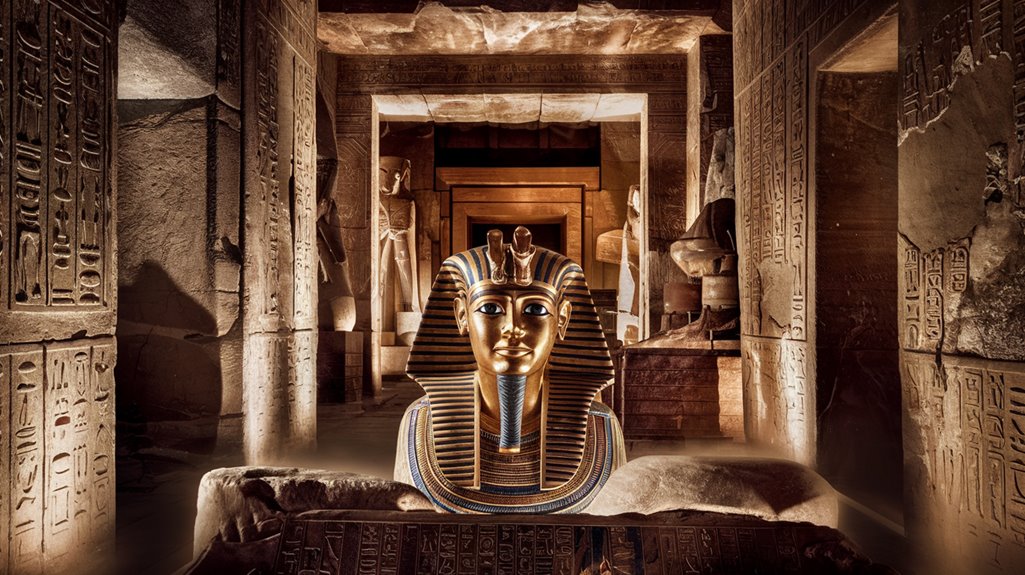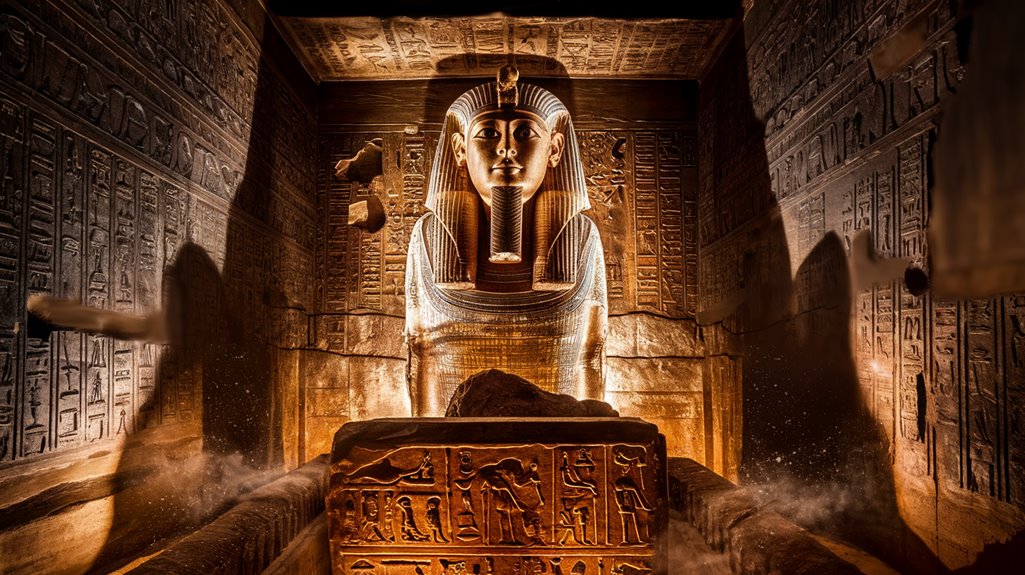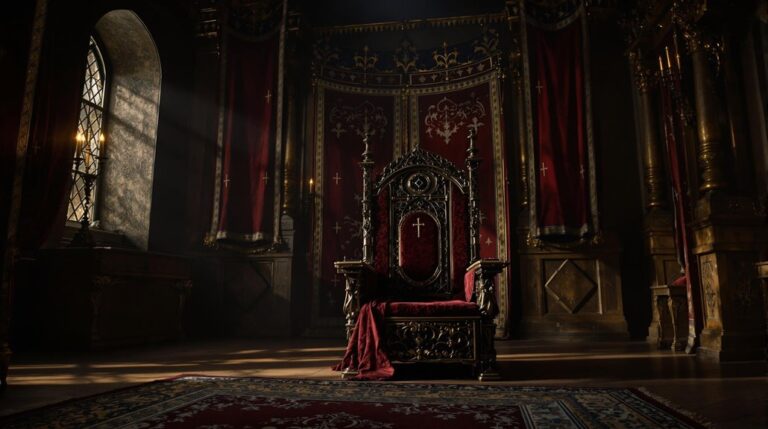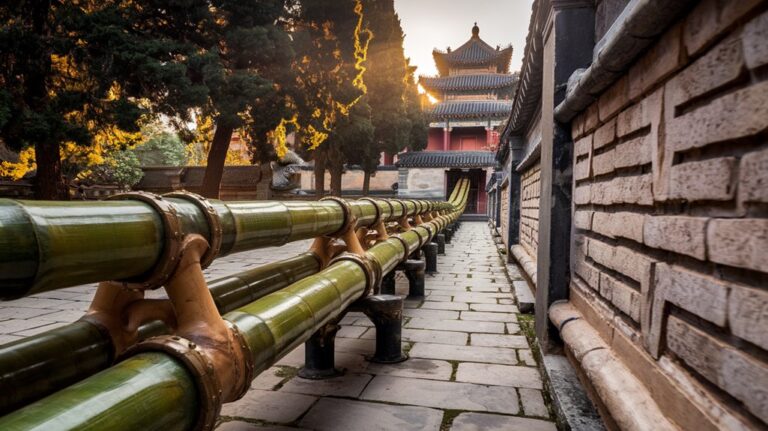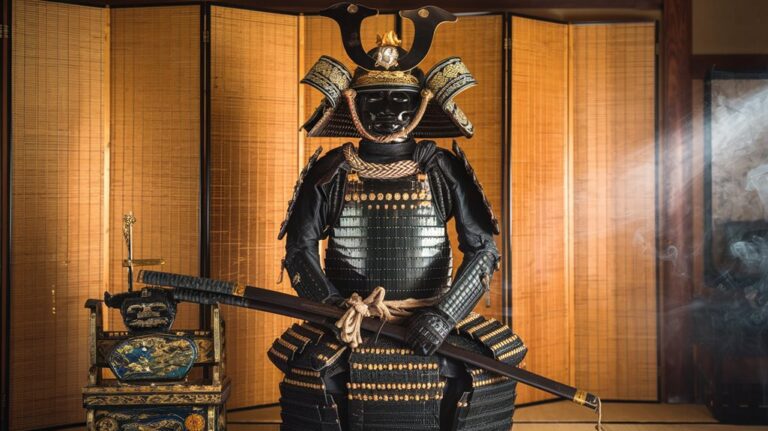The Curse of the Pharaohs: Tutankhamun’s Alleged Revenge
When Howard Carter disturbed the eternal slumber of Egypt's boy king in 1922, he couldn't have anticipated the chain of peculiar events that would follow. You've probably heard whispers of the curse that supposedly struck down those who dared enter Tutankhamun's tomb. While Lord Carnarvon's untimely departure sparked worldwide speculation about ancient vengeance, there's more to this story than meets the eye. What really happened to those who crossed paths with the young pharaoh's final resting place?
The Discovery That Sparked a Legend
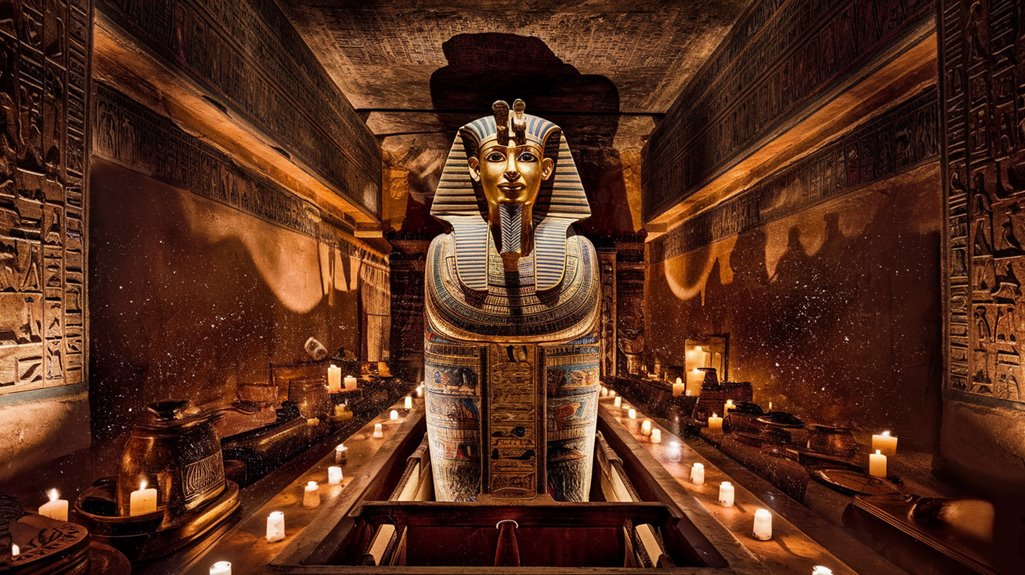
When Howard Carter uncovered a stone step in Egypt's Valley of the Kings in November 1922, he couldn't have known he was about to make one of archaeology's greatest discoveries.
After finding a sealed doorway bearing Tutankhamun's name, he made a small hole and peered inside with a candle, revealing a treasure trove of gilded furniture and ancient statuary.
The tomb discovery would prove to have immense archaeological significance.
Though ancient robbers had partially breached one entrance, they'd left another doorway sealed, preserving countless burial goods for modern study.
You can imagine Carter's excitement as he realized the magnitude of his find – a nearly intact royal tomb that would spark a media frenzy, provide vital insights into ancient Egyptian culture, and become a powerful symbol of national pride for the Egyptian people.
The excavation team worked tirelessly from November to April to avoid the extreme desert heat, making their remarkable discovery during the optimal digging season.
Lord Carnarvon, suffering from chronic health problems, traveled immediately to Egypt upon hearing of the discovery despite his fragile condition.
Lord Carnarvon's Mysterious Death
Shortly after the tomb's discovery, Lord Carnarvon met an untimely death that would spark decades of speculation about a supposed pharaoh's curse.
You might be surprised to learn that his death had nothing to do with ancient curses or toxic fungi – it was actually due to an infected mosquito bite that led to erysipelas, a severe skin infection.
Like English poet George Herbert who grew up with a wealthy Welsh family, Carnarvon came from an affluent background that enabled his archaeological pursuits.
Carnarvon's health was already compromised from a 1901 accident that had permanently damaged his lungs.
When infection complications set in, leading to pneumonia, his weakened immune system couldn't fight back.
Media outlets fueled speculation by suggesting his death was caused by ancient tomb fungi, though this was never proven.
Despite medical advice to rest, he continued pushing himself, ultimately dying at Cairo's Continental-Savoy Hotel on April 5, 1923.
While spiritualists like Sir Arthur Conan Doyle suggested supernatural causes, scientific evidence points clearly to natural causes as the reason for his death.
The Trail of Unfortunate Events
Following the tomb's discovery in November 1922, a series of mysterious deaths and misfortunes fueled widespread speculation about a supposed curse.
You'll find that among the unexplained phenomena, a snake killed Howard Carter's canary on the very day he opened the tomb – an event that Egyptian workers interpreted as King Tut's spiritual warning.
The trail of misfortune didn't end there. Historical superstitions gained momentum when several individuals connected to the excavation met untimely deaths.
While Lord Carnarvon's death from an infected mosquito bite captured headlines, other participants experienced their own share of troubles. Governor-General Sir Lee Stack met a tragic end when he was assassinated in Cairo.
Sir Bruce Ingham received a paperweight from Howard Carter that led to his house being burned and flooded.
The press enthusiastically reported these incidents, starting just six weeks after the tomb's opening.
These events, though explainable by natural causes, contributed to a growing narrative that Tutankhamun was exacting revenge from beyond the grave.
Scientific Reality vs. Popular Myth
Despite the sensational tales of supernatural revenge, scientific evidence reveals that natural causes, not an ancient curse, were responsible for the deaths associated with King Tutankhamun's tomb.
Scientific explanations point to bacterial and fungal growth inside the tomb, including dangerous Aspergillus and staphylococci, which could cause serious health issues for those with weakened immune systems.
Howard Carter's survival for nearly two decades after opening the tomb strongly contradicts the curse narrative.
The damp, enclosed environment created perfect conditions for these harmful microorganisms to thrive.
Myth debunking efforts have shown that many alleged victims were already ill before entering the tomb, with conditions like lymphoma being the actual cause of death.
Studies confirm that the death rate among tomb explorers wasn't statistically higher than in other groups.
 Lord Carnarvon's death from an infected mosquito bite sparked widespread media coverage and fueled public belief in the curse.
Lord Carnarvon's death from an infected mosquito bite sparked widespread media coverage and fueled public belief in the curse.
Ancient Egyptian Tomb Protection Practices
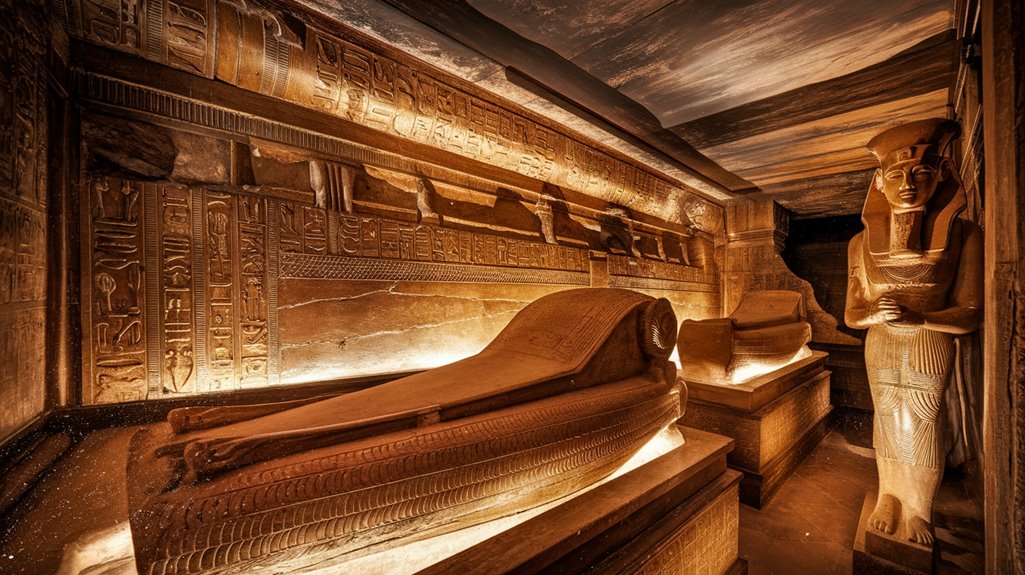
Ancient Egyptians developed sophisticated methods to protect their tombs, combining architectural innovation with spiritual safeguards. These tombs were outfitted with essential afterlife items to ensure the deceased's eternal comfort. The Valley of the Kings became the ultimate secure location for royal burials.
Their tomb architecture evolved from simple wooden structures to complex designs featuring deep wells and stone barriers. You'll find that magical protections played an equally important role, with amulets and ritual ceremonies securing the deceased's journey to the afterlife.
- Burial chambers were placed at the bottom of carved wells 2-3 meters deep, sealed with massive stone blocks.
- Stone sarcophagi and multiple layers of protection surrounded precious mummies.
- False doors served as spiritual gateways for offerings and prayers.
- Amulets shaped like snakes, Isis knots, and columns provided divine protection.
- Warning curses inscribed on tomb walls threatened death to potential tomb raiders.
These combined physical and supernatural defenses reflected the Egyptians' dedication to preserving their eternal resting places.

